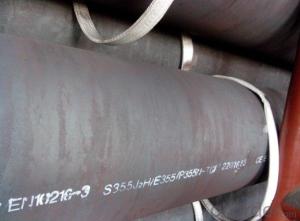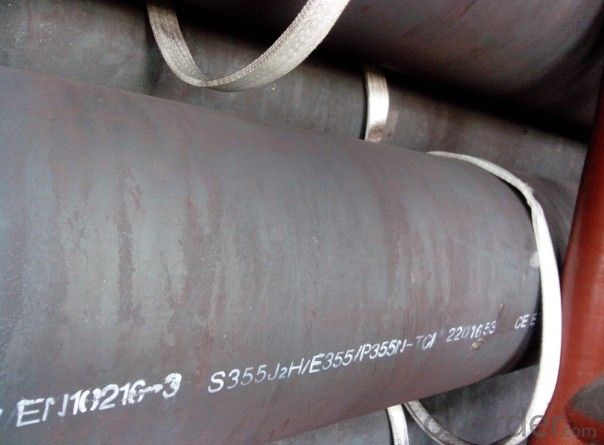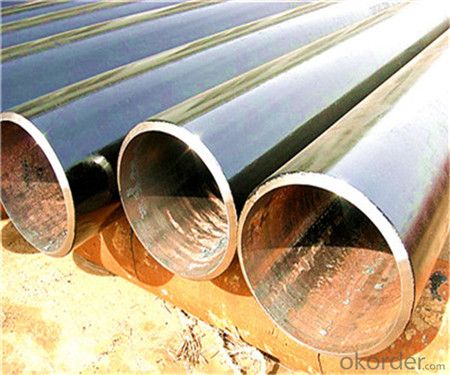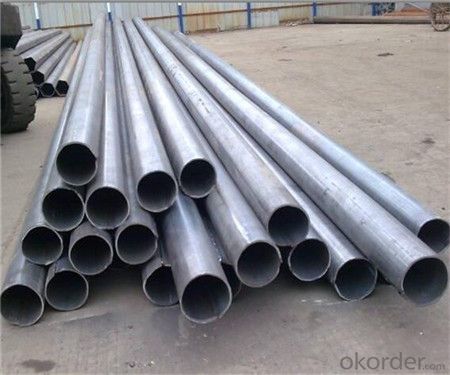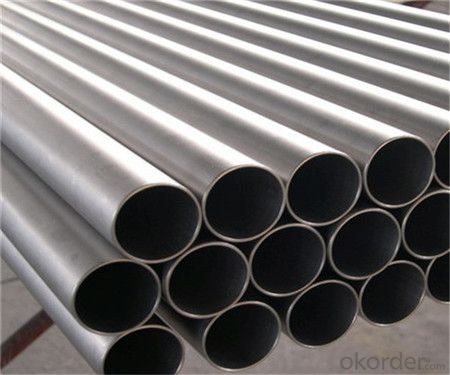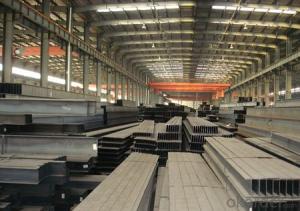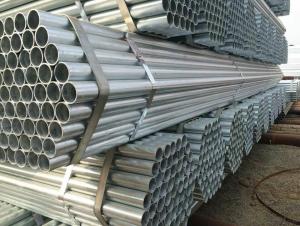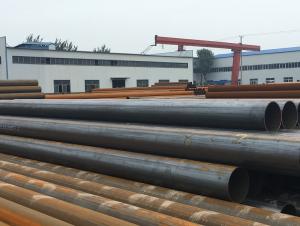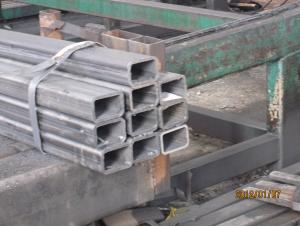Seamless Pipe for Pressure Purpose Manufacturer
- Loading Port:
- China Main Port
- Payment Terms:
- TT or LC
- Min Order Qty:
- 30 m.t.
- Supply Capability:
- 12000 m.t./month
OKorder Service Pledge
OKorder Financial Service
You Might Also Like
1、Standard Specification: EN 10216-1
●Steel grades, Chemical composition and Mechanical properties
Note: a: Quality TR1 Delivery condition: as formed or normalized or normalizing-formed
b: Quality TR2 Delivery condition: as normalized or normalizing-formed
2、Structure of Seamless Pipe EN 10216-1:
Seamless pipe is formed by drawing a solid billet over a piercing rod to create the hollow shell. As the manufacturing process does not include any welding, seamless pipes are perceived to be stronger and more reliable. Historically seamless pipe was regarded as withstanding pressure better than other types, and was often more easily available than welded pipe.
3、Seamless Pipe ASTM EN 10216-1:
Standard | GB, DIN, ASTM ASTM A106-2006, ASTM A53-2007 |
Grade | 10#-45#, 16Mn 10#, 20#, 45#, 16Mn |
Thickness | 8 - 33 mm |
Section Shape | Round |
Outer Diameter | 133 - 219 mm |
Place of Origin | Shandong, China (Mainland) |
Secondary Or Not | Non-secondary |
Application | Hydraulic Pipe |
Technique | Cold Drawn |
Certification | API |
Surface Treatment | factory state or painted black |
Special Pipe | API Pipe |
Alloy Or Not | Non-alloy |
Length | 5-12M |
Outer Diameter | 21.3-610mm |
Grade | 20#, 45#, Q345, API J55, API K55, API L80, API N80, API P110, A53B |
Standard | ASME, ASTM |
4、Packaging & Delivery
Packaging Details: | seaworthy package,bundles wrapped with strong steel strip |
Delivery Detail: | 15-30days after received 30%TT |
5、FAQ of Seamless Pipe EN 10216-1:
①How is the quality of your products?
Our products are manufactured strictly according to national and internaional standard, and we take a test
on every pipe before delivered out. If you want see our quality certifications and all kinds of testing report, please just ask us for it.
Guaranteed: If products’ quality don’t accord to discription as we give or the promise before you place order, we promise 100% refund.
②How about price?
Yes, we are factory and be able to give you lowest price below market one, and we have a policy that “ for saving time and absolutely honest business attitude, we quote as lowest as possible for any customer, and discount can be given according to quantity”,if you like bargain and factory price is not low enough as you think, just don’t waste your time.Please trust the quotation we would give you, it is professional one.
③Why should you chose us?
Chose happens because of quality, then price, We can give you both.Additionally, we can also offer professional products inquiry, products knowledge train(for agents), smooth goods delivery, exellent customer solution proposals.Our service formula: good quality+good price+good service=customer’s trust
SGS test is available, customer inspection before shipping is welcome, third party inspection is no problem.
6、Seamless Pipe EN 10216-1 Images:
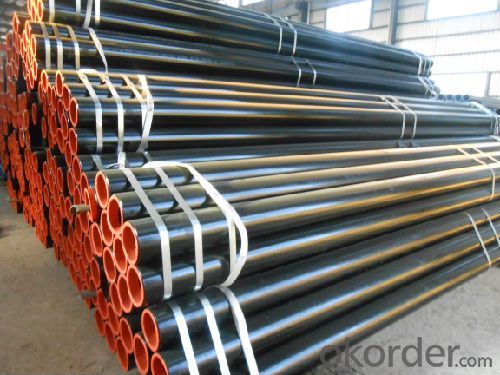
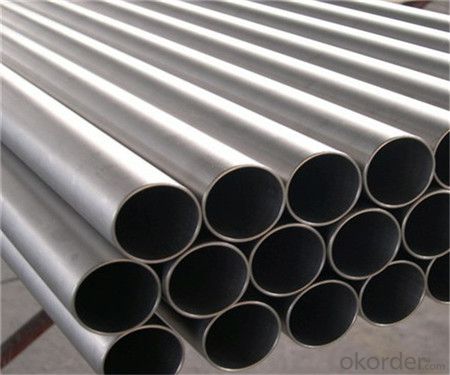
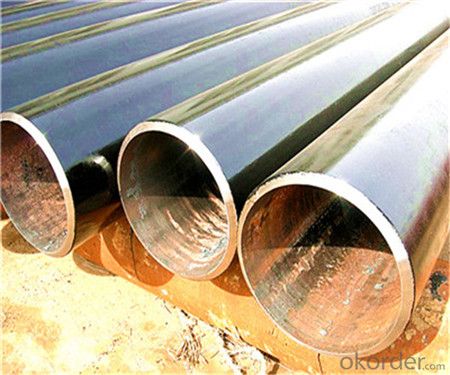
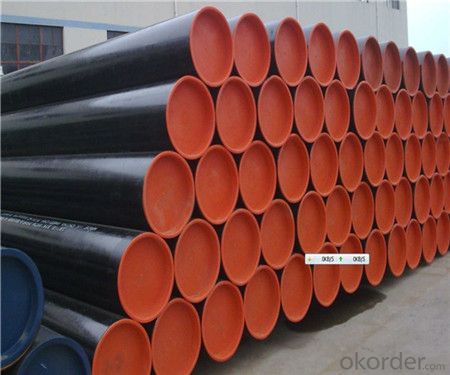
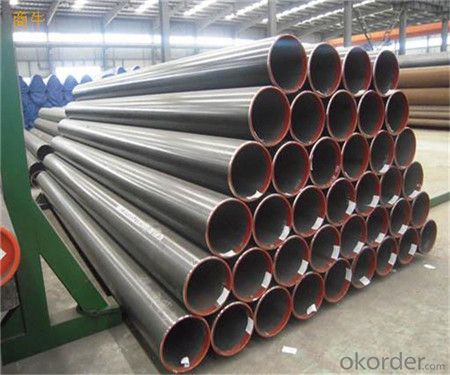
- Q: Can steel pipes be used for conveying food and beverages?
- To safely transport food and beverages using steel pipes, several precautions must be taken. First and foremost, it is imperative to select stainless steel pipes that are specifically designed for handling food and beverages. These pipes are constructed with high-quality stainless steel, which is resistant to corrosion and does not release harmful substances into the food or beverage. Secondly, it is crucial to thoroughly clean and sanitize the pipes before and after each use to maintain hygiene standards. By regularly cleaning and maintaining the pipes, the accumulation of bacteria or contaminants that could potentially contaminate the food or beverage can be prevented. Furthermore, it is vital to consider the compatibility of the food or beverage with the steel pipes. Certain acidic or corrosive substances may react with the steel, leading to contamination or compromising the integrity of the pipes. In such cases, alternative materials like food-grade plastic or rubber may be more appropriate. In conclusion, while steel pipes can be utilized for conveying food and beverages, it is essential to adhere to guidelines such as using food-grade stainless steel pipes, practicing proper cleaning and sanitization, and considering the compatibility of the specific food or beverage being transported. Following these precautions will uphold the safety and quality of the food or beverage during transportation.
- Q: Can steel pipes be used for structural applications?
- Indeed, structural applications can make use of steel pipes. With their high strength, durability, and ability to withstand various environmental conditions, steel pipes prove to be suitable for such purposes. The construction industry often relies on them to fabricate buildings, bridges, and other structures. Notably, steel pipes possess exceptional load-bearing capacity and can endure heavy loads, making them perfect for supporting structures and transferring loads. Moreover, the ease with which steel pipes can be fabricated, welded, and connected facilitates efficient construction. As a result, steel pipes emerge as a dependable and cost-effective choice for structural applications.
- Q: What is the purpose of pipe flanges in steel pipes?
- The purpose of pipe flanges in steel pipes is to provide a secure and leak-proof connection between two pipes or fittings. Flanges act as a connection point, allowing easy assembly and disassembly of pipes while ensuring a tight seal to prevent any leakage or loss of fluid or gas.
- Q: How are steel pipes inspected for defects?
- Steel pipes are inspected for defects using various methods, including visual inspection, ultrasonic testing, magnetic particle inspection, dye penetrant testing, and radiographic examination. These techniques help identify any cracks, corrosion, or other defects in the pipes to ensure their structural integrity and prevent any potential hazards or failures.
- Q: Can steel pipes be used for pharmaceutical manufacturing plants?
- Yes, steel pipes can be used for pharmaceutical manufacturing plants. Steel pipes are known for their durability, strength, and resistance to corrosion, making them suitable for transporting various fluids and chemicals used in pharmaceutical production. Additionally, steel pipes can be easily sanitized and meet industry standards for cleanliness, making them a reliable choice for pharmaceutical manufacturing facilities.
- Q: How are steel pipes insulated for thermal purposes?
- Steel pipes are commonly insulated for thermal purposes using a variety of methods. One of the most common methods is to wrap the pipes with insulation material such as fiberglass, mineral wool, or foam. This insulation material acts as a barrier between the pipe and the surrounding environment, preventing heat transfer or loss. To properly insulate steel pipes, the insulation material is typically wrapped tightly around the pipe, ensuring that there are no gaps or openings for heat to escape. The insulation is then secured in place using adhesive tapes or metal bands. In addition to external insulation, pipes can also be internally insulated. This involves placing insulation material inside the pipe, creating a layer of protection against heat loss or gain. Internal insulation is commonly used in applications where the pipe carries hot fluids or gases. Furthermore, some steel pipes are designed with a built-in insulation layer. These pipes, known as pre-insulated pipes, have insulation material already integrated into the pipe structure. The insulation layer is typically made of foam or mineral wool and is covered with a protective outer layer, providing effective thermal insulation. Insulating steel pipes for thermal purposes is crucial in various industries, such as oil and gas, HVAC, and plumbing. Proper insulation helps to maintain the desired temperature of the fluid or gas flowing through the pipes, preventing energy loss and improving overall efficiency.
- Q: What is galvanized steel pipe?
- Galvanized steel pipe is a type of steel pipe that has been coated with a protective layer of zinc to prevent rusting and corrosion. This coating helps to extend the lifespan of the pipe, making it suitable for various applications, including plumbing, construction, and outdoor structures.
- Q: What are the different methods of pipe support for steel pipes?
- There are several different methods of pipe support for steel pipes, each designed to ensure the stability, alignment, and protection of the pipes. Some of the most commonly used methods include: 1. Pipe Hangers: These are devices that suspend or support the weight of the pipe from above. They are typically made of metal and can be adjustable or fixed, allowing for easy installation and maintenance. Pipe hangers can be used in various configurations, such as clevis hangers, beam clamps, or pipe rollers, depending on the specific application. 2. Pipe Shoes: These are supports that are directly attached to the bottom of the pipe, providing a stable resting surface. Pipe shoes are usually made of steel or other durable materials and are designed to prevent pipe movement, absorb vibrations, and distribute the weight evenly. They are commonly used in applications where pipes are subjected to high temperatures or where there is a need for thermal expansion. 3. Pipe Clamps: These are devices used to hold or fasten the pipes together or to a structure. Pipe clamps are typically made of metal and come in various sizes and designs to accommodate different pipe diameters and configurations. They provide support and prevent the pipes from sagging or moving, especially in areas where there are changes in direction or elevation. 4. Pipe Racks: These are structures that are specifically designed to support multiple pipes in an organized and secure manner. Pipe racks are commonly used in industrial settings, such as refineries or power plants, where large quantities of pipes need to be stored or supported. They are typically made of steel and can be customized to accommodate different pipe sizes and layouts. 5. Pipe Guides: These are devices that help guide and control the movement of the pipe, especially during thermal expansion or contraction. Pipe guides are typically fixed to the structure and provide a sliding surface to allow for the longitudinal movement of the pipe. They are commonly used in applications where there are changes in temperature, such as in steam or hot water systems. These are just a few of the many methods of pipe support for steel pipes. The choice of support method depends on factors such as pipe size, weight, temperature, and the specific requirements of the application. It is crucial to select the appropriate support method to ensure the longevity and integrity of the pipes and to prevent any potential issues such as sagging, misalignment, or failure.
- Q: How are steel pipes repaired in case of damage?
- Steel pipes are typically repaired by first identifying the damaged section of the pipe. Then, the damaged area is cut out and replaced with a new section of pipe. This new section is welded or clamped into place to ensure a secure connection. In some cases, epoxy or other sealants may be used to repair smaller cracks or leaks. Overall, the repair process aims to restore the structural integrity and functionality of the steel pipes.
- Q: How do you prevent leaks in steel pipes?
- One way to prevent leaks in steel pipes is by applying a protective coating or lining to the interior surface of the pipes. This can help to prevent corrosion and deterioration, which are common causes of leaks in steel pipes. Additionally, regular inspection and maintenance of the pipes, including checking for signs of damage or wear, can help to identify and address potential leaks before they become a problem.
Send your message to us
Seamless Pipe for Pressure Purpose Manufacturer
- Loading Port:
- China Main Port
- Payment Terms:
- TT or LC
- Min Order Qty:
- 30 m.t.
- Supply Capability:
- 12000 m.t./month
OKorder Service Pledge
OKorder Financial Service
Similar products
Hot products
Hot Searches
Related keywords
